Historical flags of the states 1700. The truth about the Russian flag - the tricolor

On August 22, Russia celebrates the holiday of the flag. Today a Russian person will begin to indulge in reflections: "Where did the Russian tricolor come from?", "Why did we choose the banner of the" Vlasovites? " There is no way to leave these questions unanswered. We'll have to answer.
1. How did we get under this flag?

Every citizen of Russia who has a solid “four” in his school history certificate knows that the Russian tricolor appeared in our country thanks to Peter the Great. But if you went to a school with an in-depth study of history, or your teacher was a vexillologist, then you know something completely different - the correct one. The first tricolor appeared in Russia earlier, during the reign of the first tsar from the Romanov dynasty, Mikhail Fedorovich.
In 1634, an embassy from the Duke of Holstein Frederick III arrived at the court of Mikhail Fedorovich. In addition to diplomatic issues, the embassy also decided on the construction of ten ships on the Volga to travel to Persia. The first ship, the Frederick, was launched in 1636. The term of his ship life was short, but he went under the Holstein flag, suspiciously similar to our current tricolor. So the tricolor flag was revealed to the eyes of the Russian people, but while it was not a Russian flag, it became Russian (or almost Russian) under Alexei Mikhailovich.
Alexey Mikhailovich chose this flag for the first Russian frigate "Eagle". Dutch engineer Davyd Butler asked the tsar what flag to put on the ship. Russia did not yet have its own flag, and the frigate's crew consisted entirely of the Dutch, so without hesitation it was decided to put up a flag identical to the Dutch one, which, of course, is at least strange. Going out under the Protestant flag to the sea for the then Russian sailors, who consisted of 80 percent of the Pomors, was tantamount to taking an escort of women on board, bringing a solemn sacrifice of a seagull right on the deck, erecting several coffins in the hold and breaking other signs ... One conclusion from this suggests itself: there was not a single Orthodox Christian on board the Eagle. Although, the ship is a ship. Ship flags used to be a complete formality, they were changed before entering ports, trade could not be threatened. In general, the tricolor first appeared on a Russian ship by accident, reaching the point of absurdity.
The appearance of the tricolor under Peter also cannot be explained by the wisdom of choosing a ruler. He just loved Holland very much. So much so that many courtiers, after the return of Peter I from the great embassy, thought that he had been replaced. In Rotterdam, a frigate with a Dutch flag, built by Peter's order, was waiting for Peter. Peter liked him so much that he decided not to change the banner.
2. Why three colors?
Three colors on Russian flag associated with heraldic fashion, going back to the Merovingians. On the banner of the Frankish king Clovis, there were three toads, denoting three mothers, three racial types, three psychological worldview models: Freya, Lida and Findu. Later, the toads were replaced by lilies, symbolizing first the Virgin Mary and then the Holy Trinity. There is no single meaning of the symbolism of the colors of the Russian flag. Everyone is free to believe what he wants, but it is significant that the colors of the Russian flag could have been different. Initially, the Dutch flag was not red-blue-white, instead of red it was orange. According to the official version, it was a revolution in everyday life that prompted the Dutch to change the orange color to red - the fact that the orange color, fading, acquired very interesting tones, up to green, and the flag looked like the "rainbow flag" popular today in certain circles. Do we want such a flag?
3. Was there an alternative?
The answer to this question is unequivocal: it was. And not one. And not two. Much more.
Firstly, Russian flags can be considered battle banners the times of Ivan the Terrible. They were traditional red with the image of Christ. In 1552, Russian regiments marched under it to the victorious assault on Kazan. In the chronicle record of the siege of Kazan by Ivan the Terrible (1552) it is said: "and the sovereign of the kherugvi ordered the Christian to unfold, that is to say, the banner, on them the image of our Lord Jesus Christ Not Made by Hands." This banner for a century and a half accompanied the Russian army. Under Tsarina Sofya Alekseevna, it visited the Crimean campaigns, and under Peter I - in the Azov campaign and in the war with the Swedes.
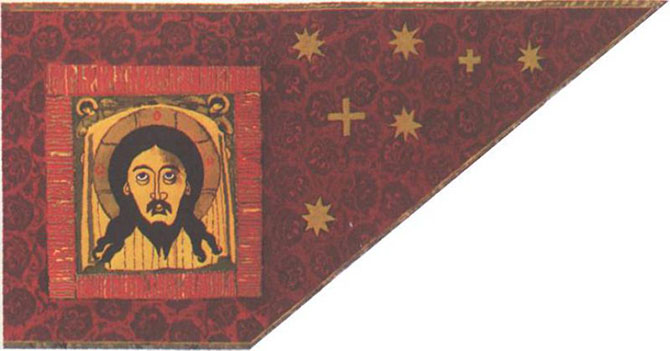
An alternative to the tricolor could be the St. Andrew's flag - white with an azure cross, in honor of the Order of the Holy Apostle Andrew the First-Called. Apostle Andrew the First-Called was crucified on an oblique cross. For this reason, Christians associate an oblique cross with the name of this apostle. Andrew the First-Called in his wanderings reached the shores of the Black Sea and baptized the ancient Rus. In Russia they were proud that the beginning of Russian Christianity was connected with the deeds of the very first of Christ's disciples. After this change, the Russian fleet began to win decisive victories in naval battles.
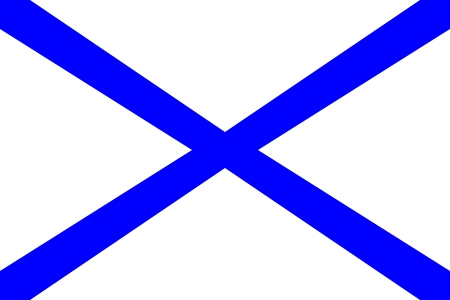
The flag of Alexei Mikhailovich, the first Russian flag, could also become the current flag of Russia. It was created in the likeness of the streltsy banners. The flag of Tsar Alexei Mikhailovich is deeply symbolic. It is based on the Cross. Thus, this flag indicates the mission of Russia in the universe, as the last bearer of the true faith - Orthodoxy.
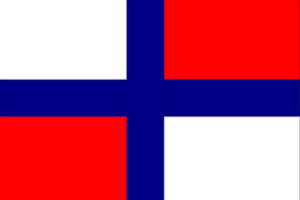
Finally, after the collapse of the Union, as a sign that we once again renounced the old world (this time - from the world of dreams in developed socialism), it could become the flag of Russia - the flag of the Romanov dynasty (black-yellow-white). For the first time, it began to be hung on solemn days after 1815, following the end of Patriotic War with Napoleonic France. By the decree of Alexander II of June 11, 1858, it was introduced as a "coat of arms" flag. The flag designer was probably B. Kene. The black-yellow-white banner is based on the Russian heraldic tradition. Its black color is from a two-headed eagle, yellow is from the golden field of the coat of arms, and white is the color of St. George.
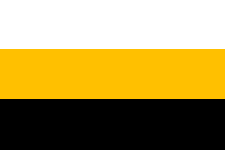
There were other flags in Russia as well. The choice of the tricolor is associated with yet another farce of history, but more on that later.
4. Why are other Slavs also under this flag?
Officially, there are three versions of why "our colors" are present on the flags of other peoples who participated in the Pan-Slavic congress in the middle of the 19th century. Two of them are absurd, one is true. According to the first version, the colors are borrowed not from the Russian trade flag, but from the flag of France, and they represent, respectively, freedom, equality and brotherhood. Of course it is not. Nicholas I, who has his own idea of these three values (fundamentally different from the ideals of the French Revolution) would hardly have allowed such a genesis. The second version is even weaker: these colors went to the Pan-Slavs from the Duchy of Carniola, which is about three Moscow squares. Finally, the main version is the "Russian genesis". Sponsorship and support from Russia is the main reason for the tricolor in the national flags of the Slavic peoples.
5. Why was this flag chosen by the Provisional Government?
It actually did not choose him. It just didn't change it. At the Legal Meeting in April 1917, it was decided to keep the flag as national. At the May meeting of the Provisional Government, the issue of the flag was postponed "until the resolution of the Constituent Assembly." In fact, the tricolor remained national flag before October revolution, legally - until April 13, 1918. when it was decided to establish the flag of the RSFSR. During the Civil War, the tricolor was the flag of the Whites, Soviet army fought under the red flag.
6. Why did Vlasov choose this flag?

ROA and RNNA consisted, by and large, of White emigrants. It is not at all surprising that the flag tsarist Russia was used by Vlasov. For the fight against Stalinism and Bolshevism (this is how Vlasov justified his betrayal), there was simply no better flag. Tricolor even participated in the ROA parade in Pskov on June 22, 1943.
7. Why did Yeltsin choose this flag?
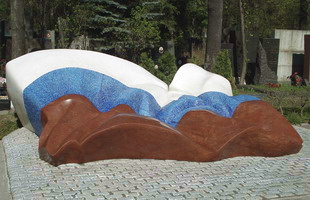
The first to use the tricolor after Vlasov was Garry Kasparov. During the world championship match with Anatoly Karpov (who played under the Soviet flag), Kasparov performed under the red-white-blue flag. Perestroika was going on and Harry Kimovich, obviously, felt where and where the wind was blowing. By the way, Kasparov won that match. A year later, he won the flag. At the putsch (an accident, probably), people came with red-white-blue flags... The veterans, who 20 years ago there were much more, and who were also in the crowd at the House of Soviets, experienced bewilderment: they remembered the history of half a century ago. One of the flags was on the tank with Boris Nikolayevich. It is interesting that the Yeltsin memorial at the Novodevichy cemetery is a huge tricolor. The flag returned with the 1991 putsch.
August 22our country celebrated the day of the state flag of Russia, and what do we know about the tricolor?
Over the years of destructive "restructuring" and "reforms" a lot of false concepts and symbols were introduced into the consciousness of our people, which contributed to the perverted perception of obvious facts and phenomena by people.

For example, many of our compatriots believed the lie of the "democrats" that the current tricolor state flag of Russia introduced by them is a traditional state symbol country, has deep and glorious historical roots and, therefore, it must be respected and even worshiped.
In fact, the white-blue-red flag before the 1917 revolution was never the state flag of Russia. It appeared in Russia in 1676 under Tsar Alexei Mikhailovich, as a commercial trade flag, and this purpose was legalized by the decree of Peter I in 1705.
![]()
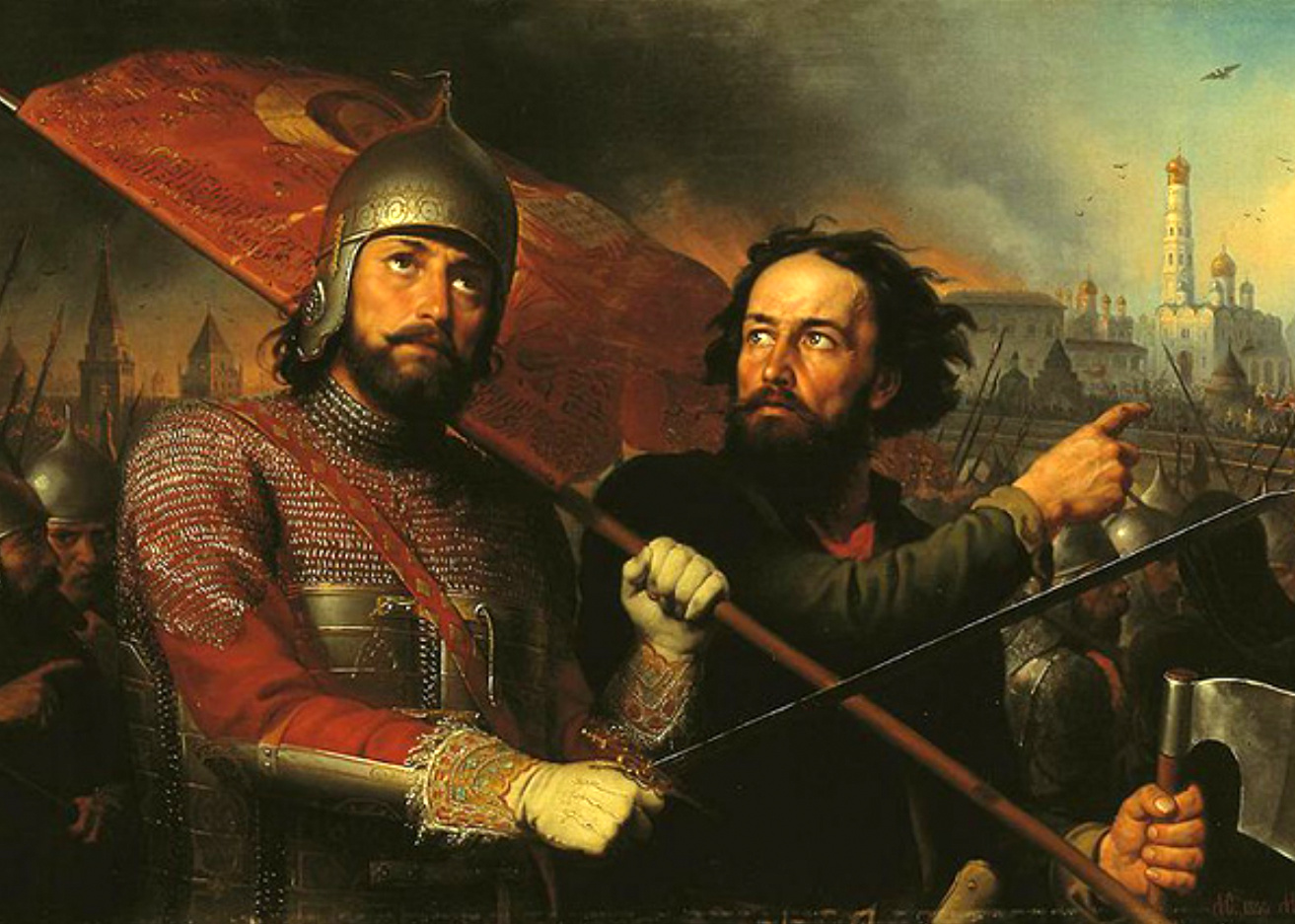

An attempt in 1896 to make this flag a state flag caused a stormy protest from the Russian public, which opposed the introduction of the tricolor borrowed from Europe, and Nicholas II left it as a trade flag.
The white-blue-red tricolor has no historical value. Our entire great history is associated with the red flag. Under the red banners, Alexander Nevsky, Dmitry Donskoy, Ivan the Terrible, Minin and Pozharsky defended their homeland and won. The best regiments of Peter the Great had red regimental banners.
Under the red banner, our fathers and grandfathers won Victory in the Great Patriotic War.
At the same time, the white-blue-red flag is associated with the black periods of our history.
It was under this tricolor that the French in 1812 carried out an invasion of Russia, and in 1853 they stormed Sevastopol. In years civil war 1918-1920 White Guard generals-assassins Kornilov, Denikin, Kolchak under the tricolor banner together with the Entente fought against their people.
During World War II, on the personal instructions of Hitler, the white-blue-red tricolor as a banner was presented to the army of the traitor General Vlasov, which was officially called in Nazi Germany - "Eastern Legion of the SS", and fought against our country and people on the side of Hitler. This tricolor in all Vlasov headquarters hung next to the portrait of Hitler and his standard.

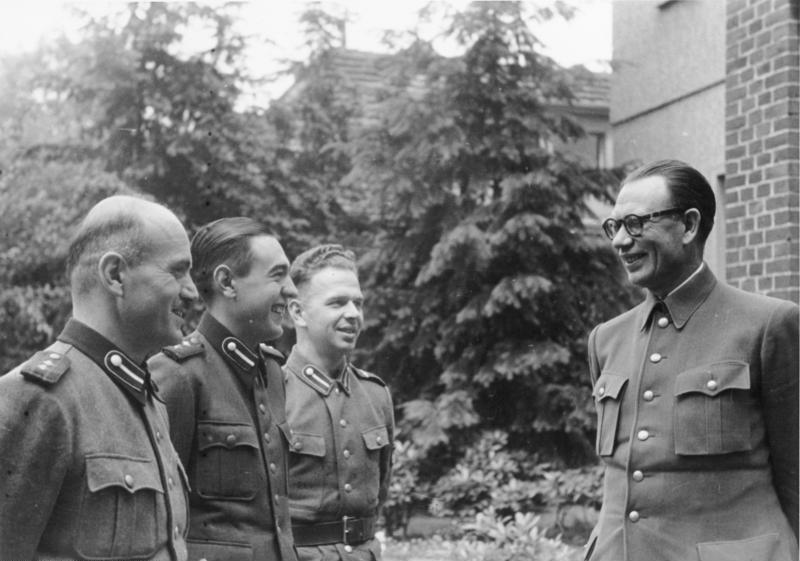
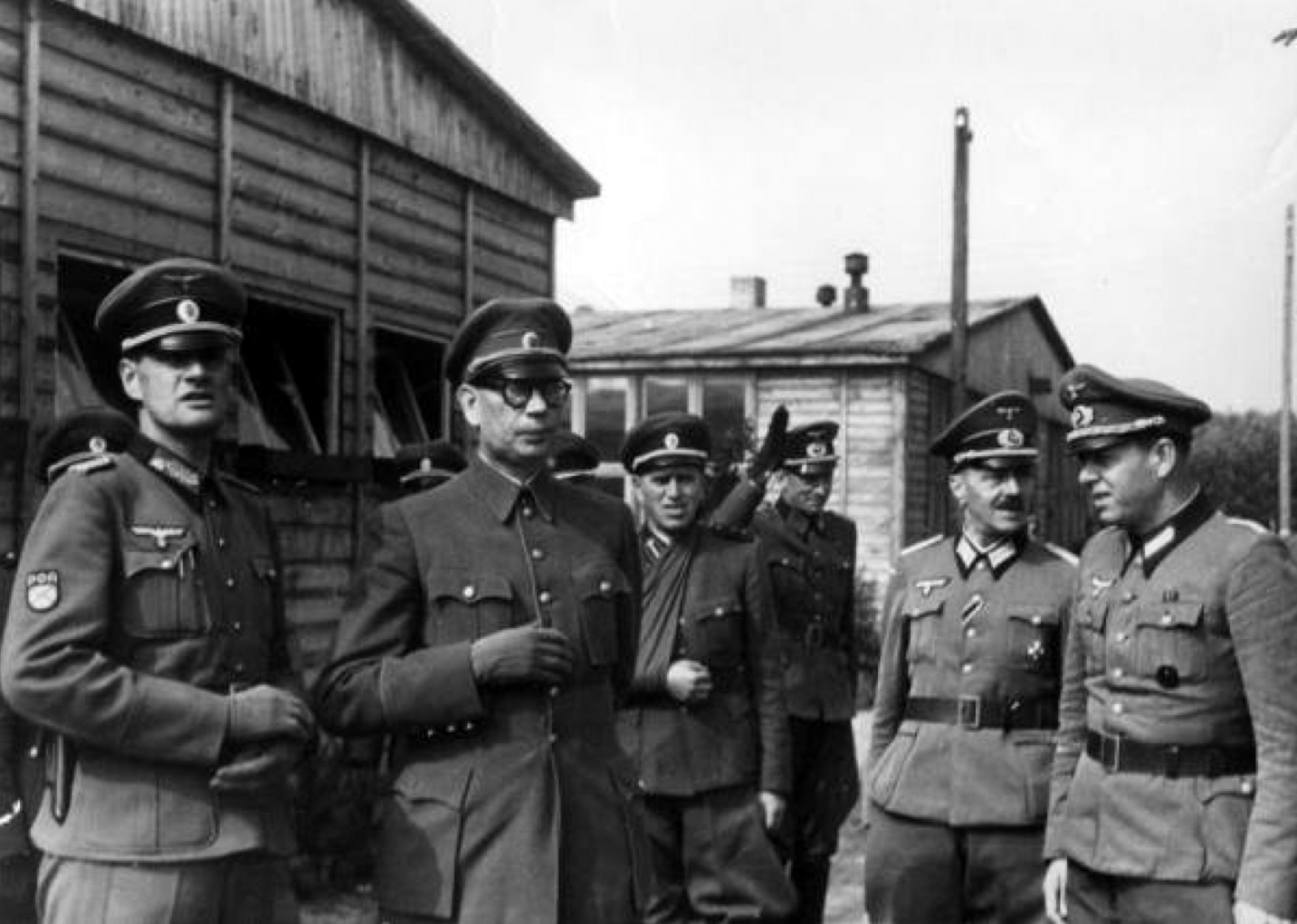
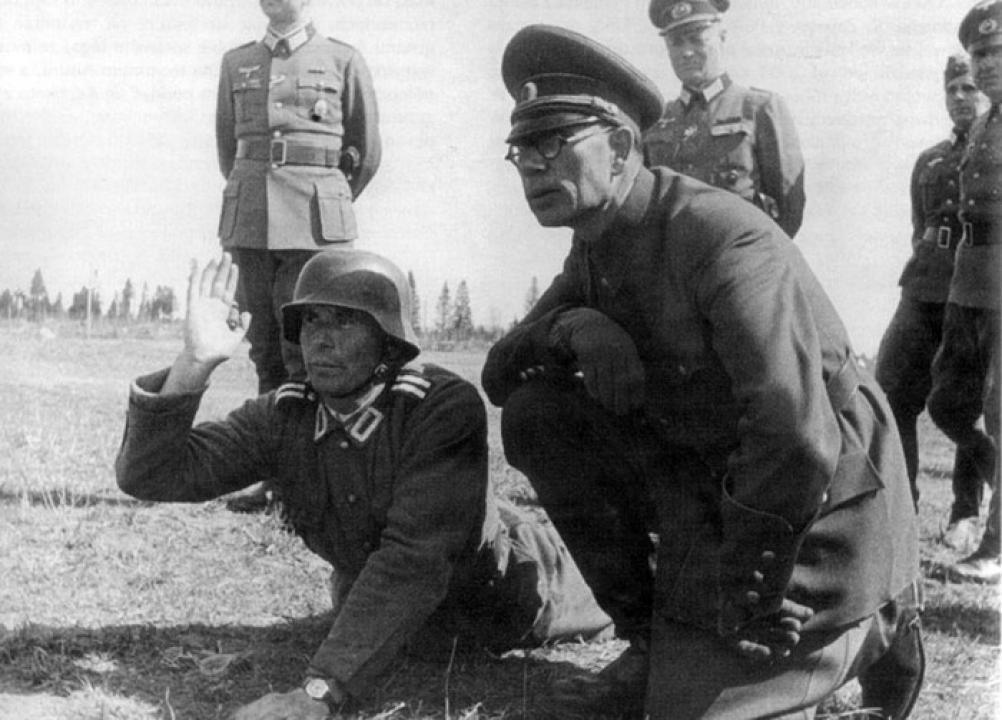

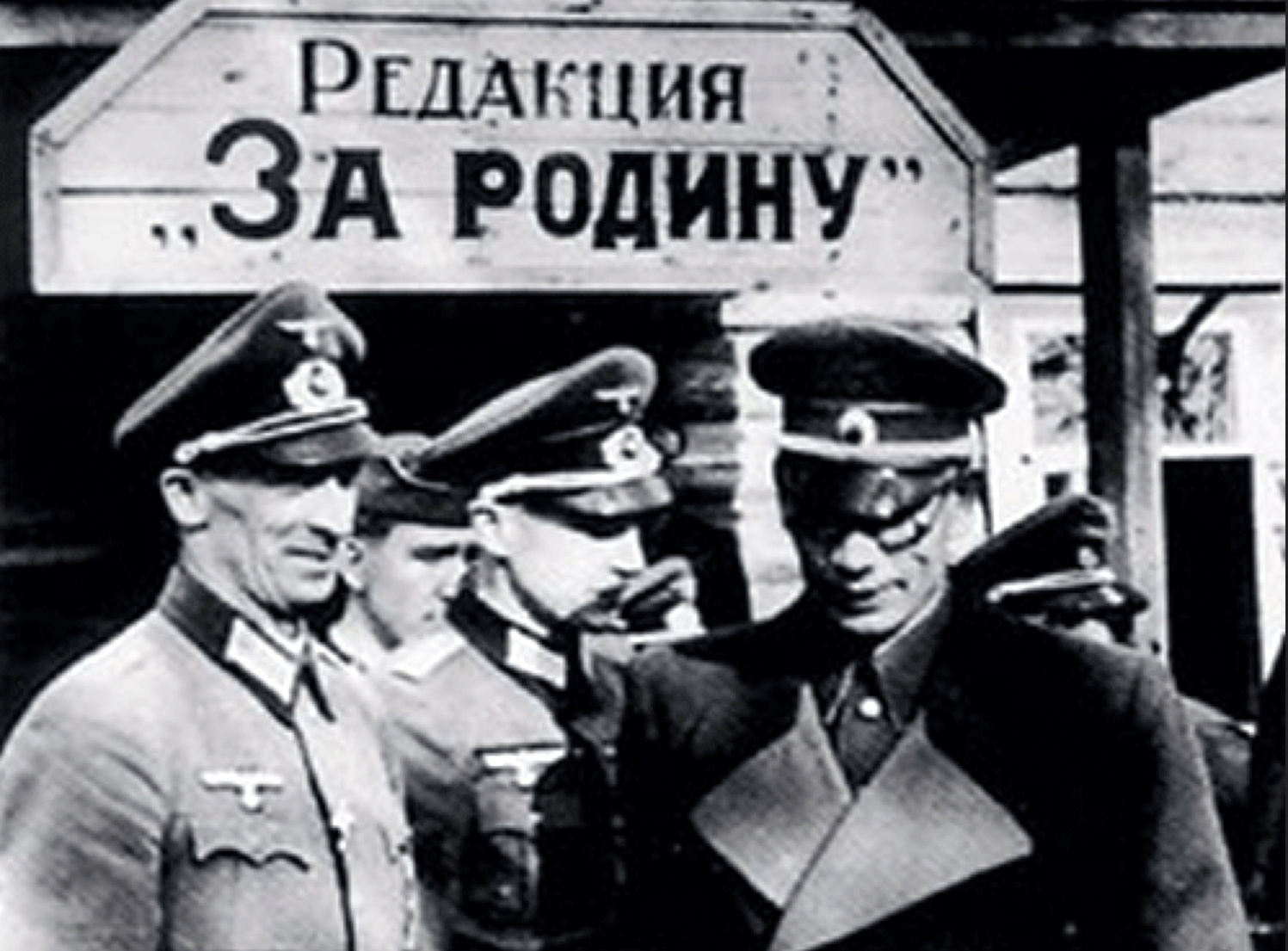
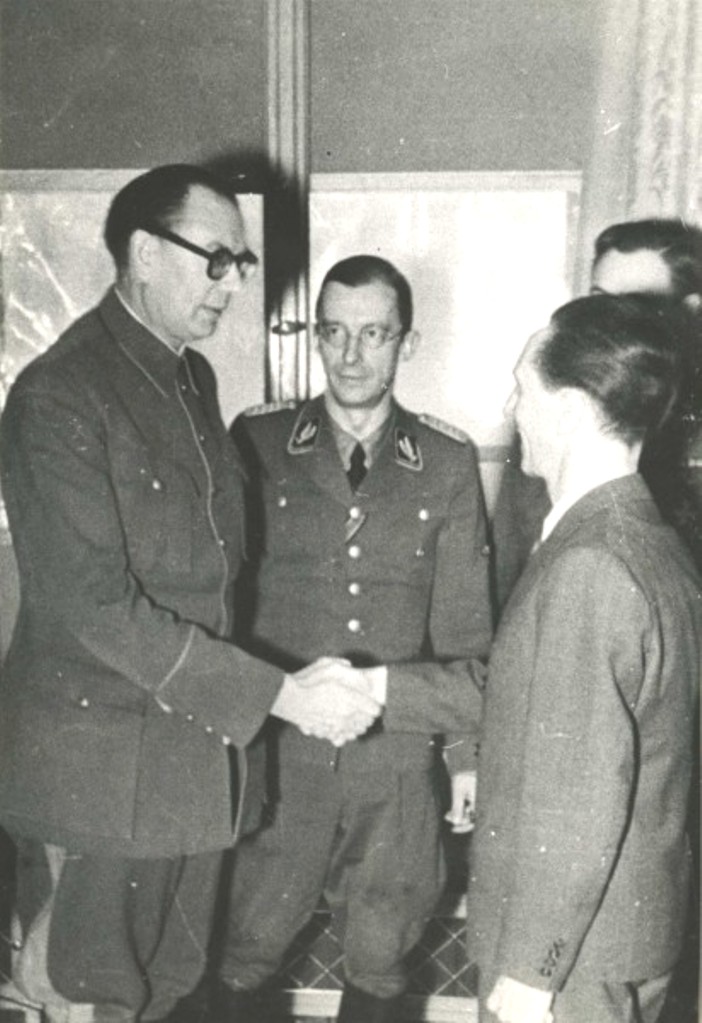
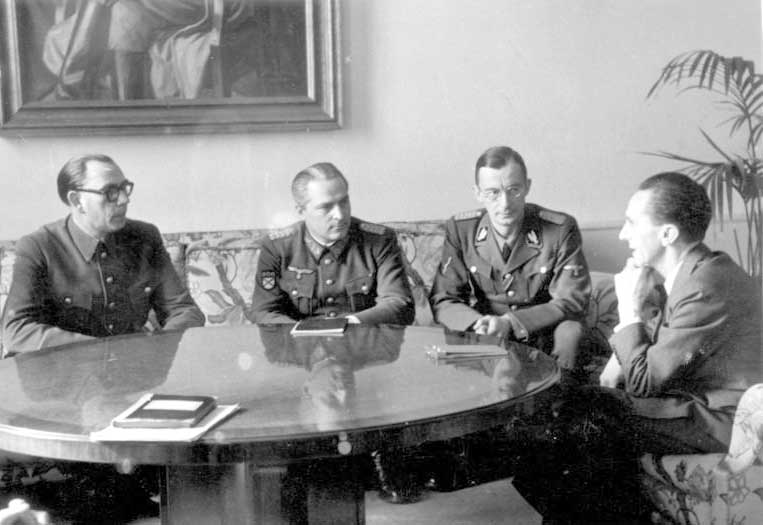

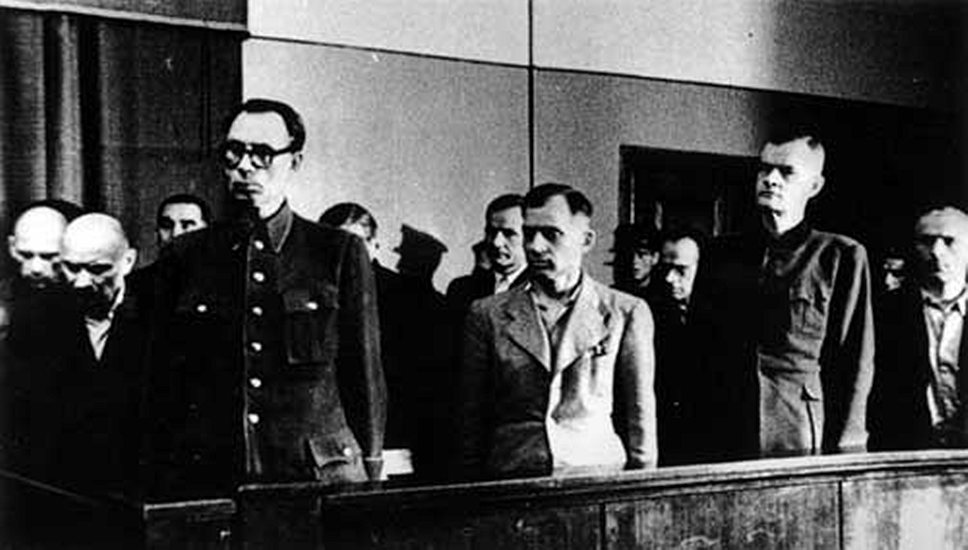 trial of traitors to the Motherland
trial of traitors to the Motherland
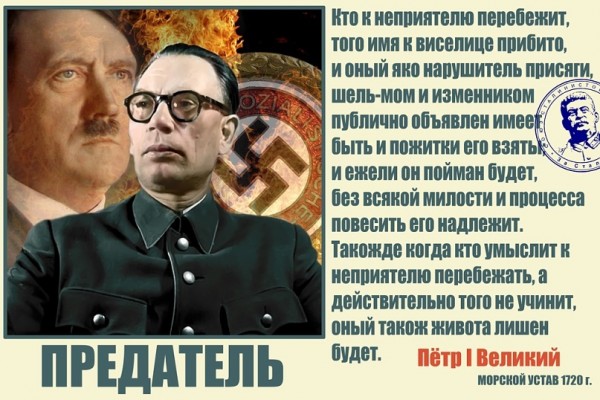
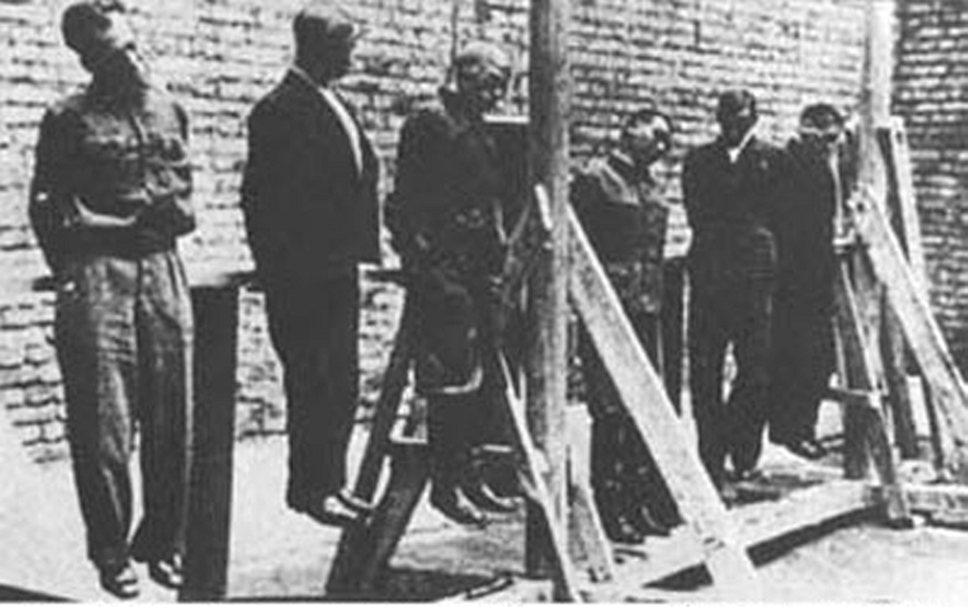 Execution of traitors to the Motherland. Vlasov is the third from the right along with his headquarters.
Execution of traitors to the Motherland. Vlasov is the third from the right along with his headquarters.
And this Judas tricolor, at the initiative of Yeltsin, Russian "democrats" made the state flag of Russia, and it hangs over the sacred Kremlin, replacing the Red Banner of Victory. This is not only disrespect for the history of the country, for the memory of the victims, but actually crossed out the results of the Great Patriotic War for us.
You can understand young people who, not knowing and not understanding history, waving tricolor flags at stadiums, at ceremonial events, etc. that is, two parties who fought against each other. Have they really forgotten that at the Victory Parade in Moscow on June 24, 1945. this Vlasov tricolor was thrown at the foot of the Mausoleum along with other fascist banners.
Do we really accept and recognize the state symbol of the country imposed by the anti-people power, completely alien to us in spirit and historical memory, the white-blue-red tricolor - the flag of betrayal and treason ?!
From the author.
So far, the invaders have imposed the Vlasov tricolor on us, but do you think it's time for us to raise the RED FLAG over our country? After all, the RED FLAG is the flag of VICTORY and the power of our state - the USSR!
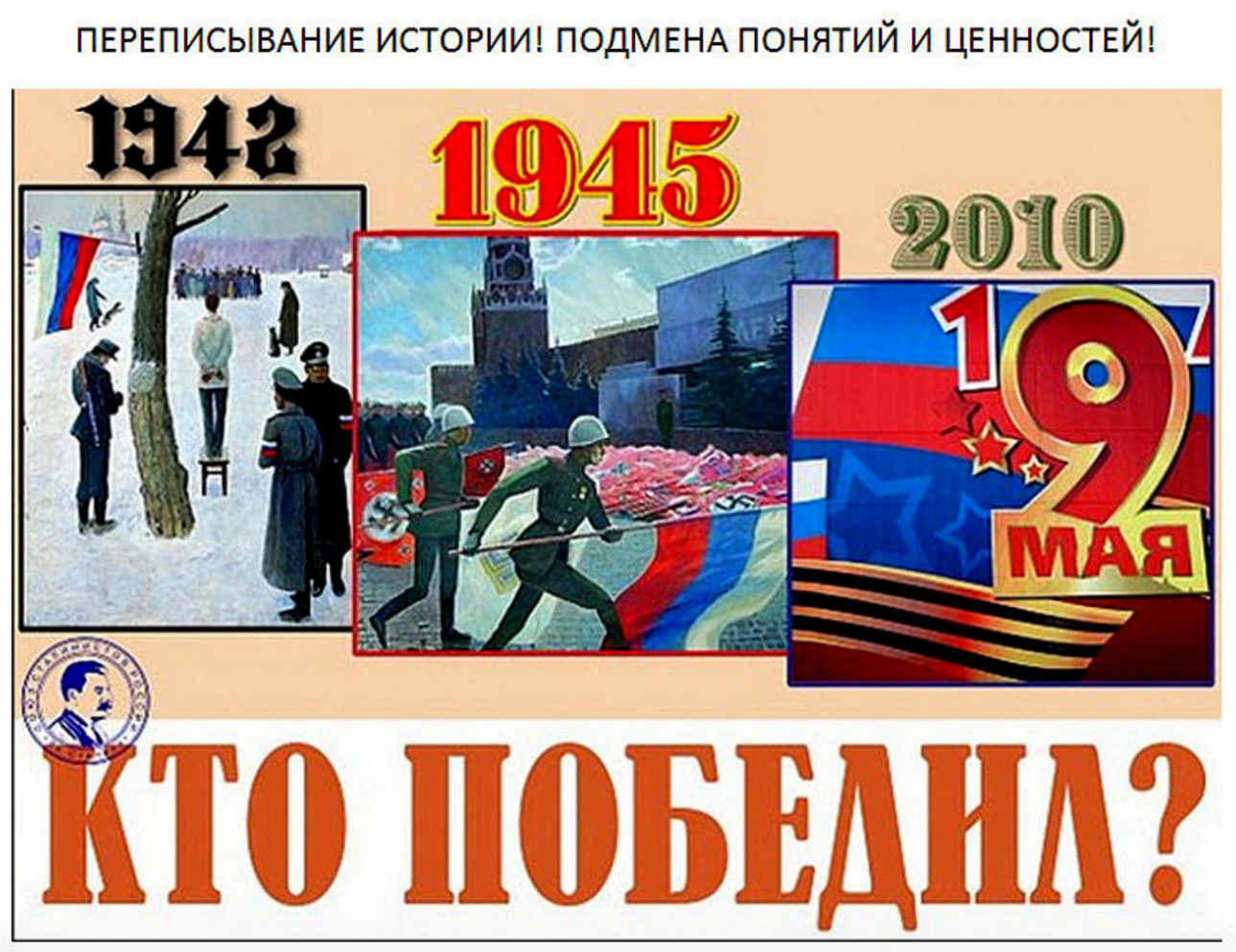
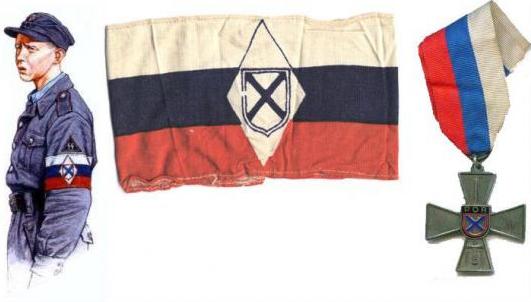
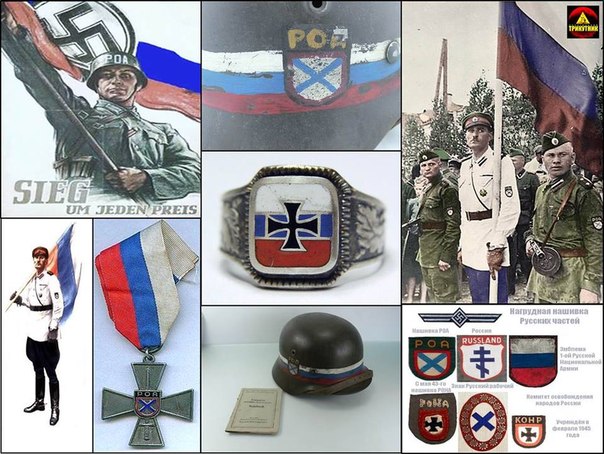
So who is now celebrating Victory, the Soviet people or banking (Hitler, Vlasov, financial) fascism?

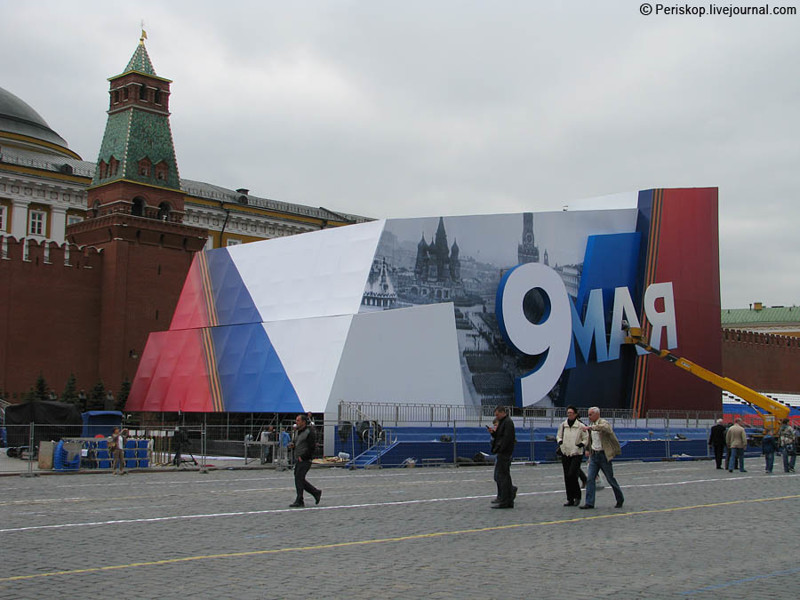
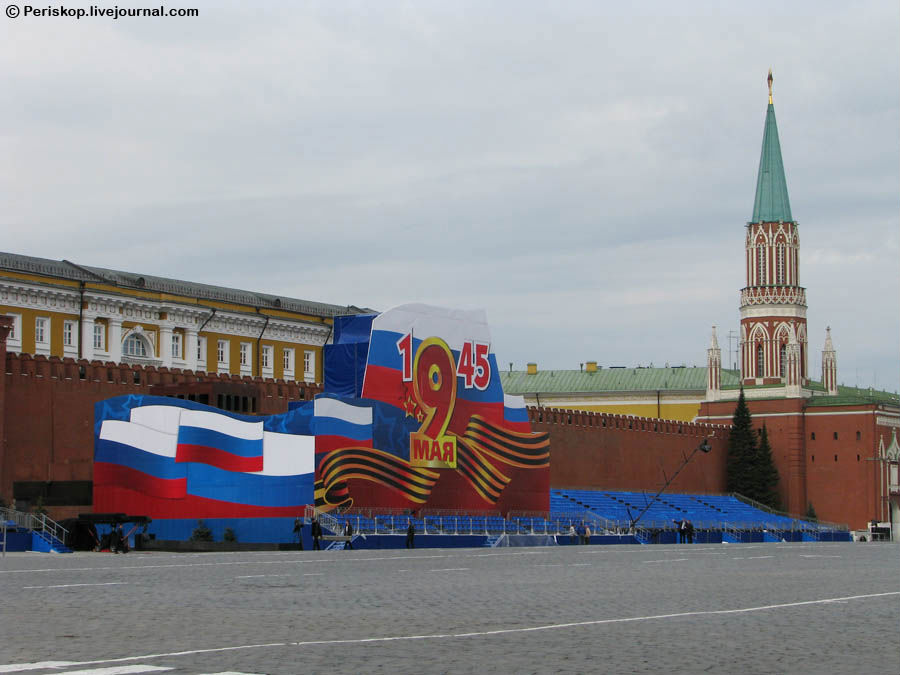

Now you understand why our NATO bases are located in Russia and why Russia is doing it regularly! For those who do not know what the Budget Rule is, I can explain that this is a transfer of almost all profits from oil and gas production in Russia to the Reserve Fund of the Russian Federation, which is located for some reason in the United States, which in turn is the owners of world money - the Fed shareholders. And is that to your liking?
Our banner is red! Our Victory Banner!
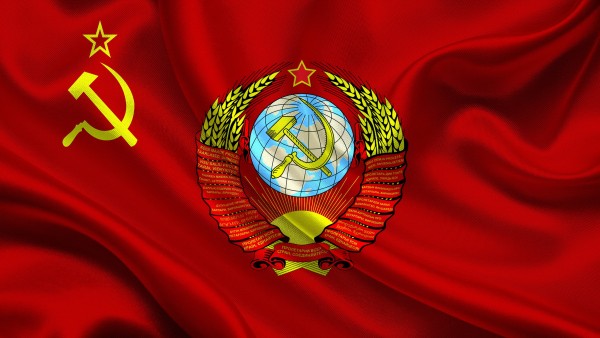
Enough for us to slip the Tsar's St. George ribbons! Their time is irrevocably gone with tsarism and slavery! Our ribbon is scarlet and is a particle of the Victory Banner! Russian tricolor leave the Vlasovites and other traitors and traitors to our Motherland!
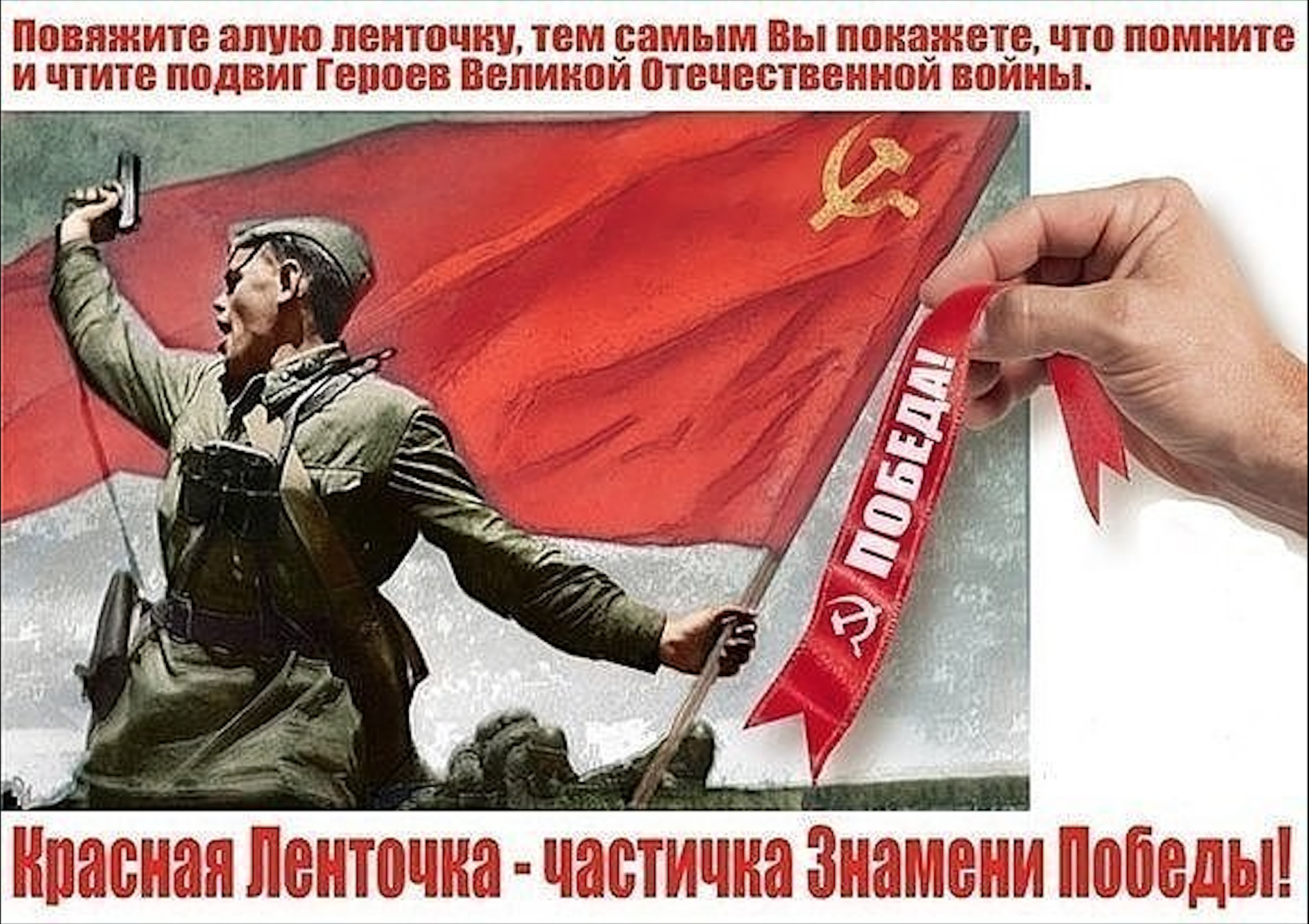
In the Russian Federation, a law has been adopted prohibiting the symbols of organizations that collaborated with the Nazis during the Second World War.
Surprisingly, the Kremlin did not even realize that they had banned their own national flag - the tricolor, as a symbol "Russian Liberation Army"(ROA) General Vlasov, a traitor to the Motherland!
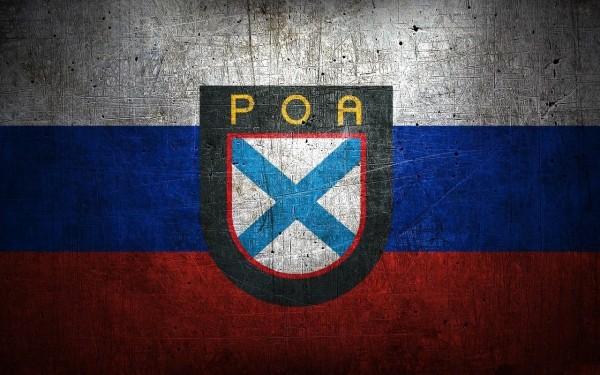
Russian tricolor on the fronts of World War II:
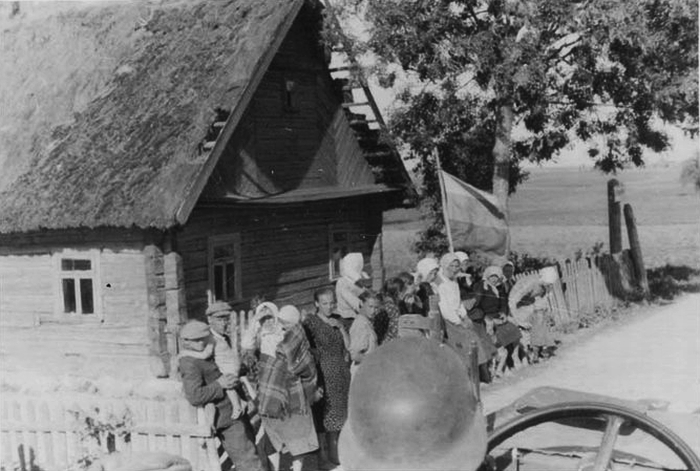
 Formation under the national flag of a part of the Russian National People's Army (RNNA) in Osintorf, 1942
Formation under the national flag of a part of the Russian National People's Army (RNNA) in Osintorf, 1942
 Russian flag at the parade of the 1st Guards brigade of the ROA in Pskov, 1943
Russian flag at the parade of the 1st Guards brigade of the ROA in Pskov, 1943
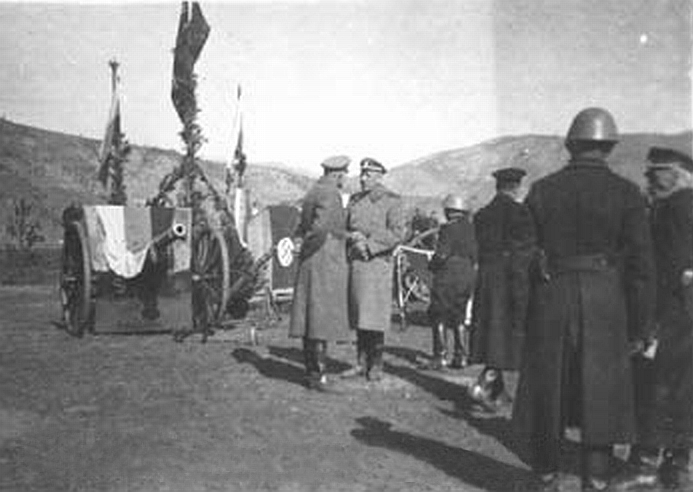 A tricolor banner covers the gun shield at the ceremony of oathing of new recruits to Hitler's "Russian Corps" in Yugoslavia, 1943.
A tricolor banner covers the gun shield at the ceremony of oathing of new recruits to Hitler's "Russian Corps" in Yugoslavia, 1943.
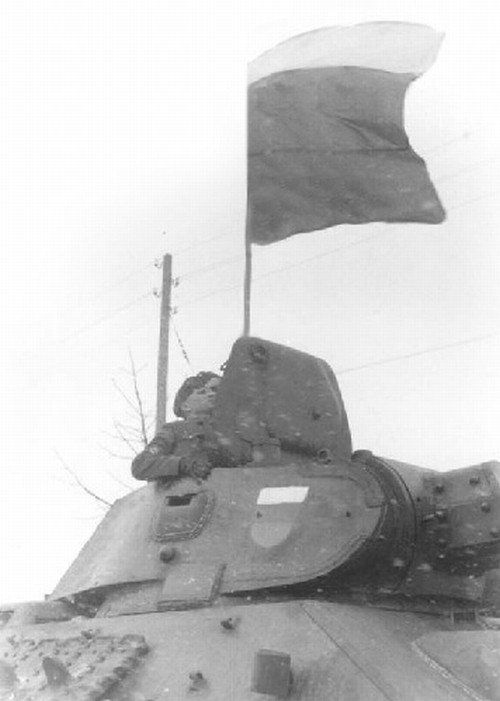 Tricolor on the flagpole and armor of the T-34 tank group ROA, 1944
Tricolor on the flagpole and armor of the T-34 tank group ROA, 1944
 The Vlasovites raise a white-blue-red flag at the location of the 1st division. Müsingen, Germany, 1945
The Vlasovites raise a white-blue-red flag at the location of the 1st division. Müsingen, Germany, 1945
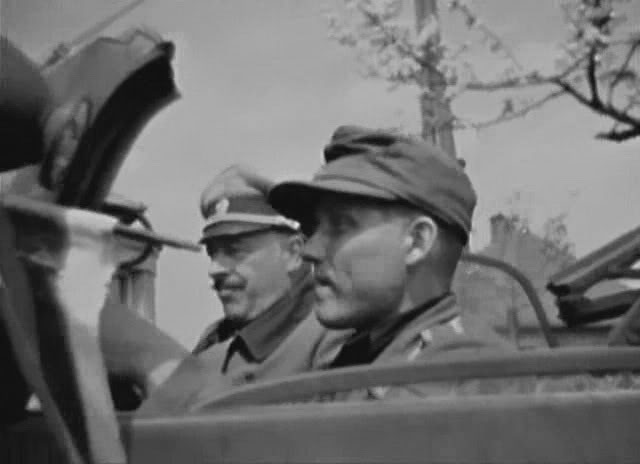 Identification flag on the ROA headquarters vehicle, Czech Republic, 1945
Identification flag on the ROA headquarters vehicle, Czech Republic, 1945
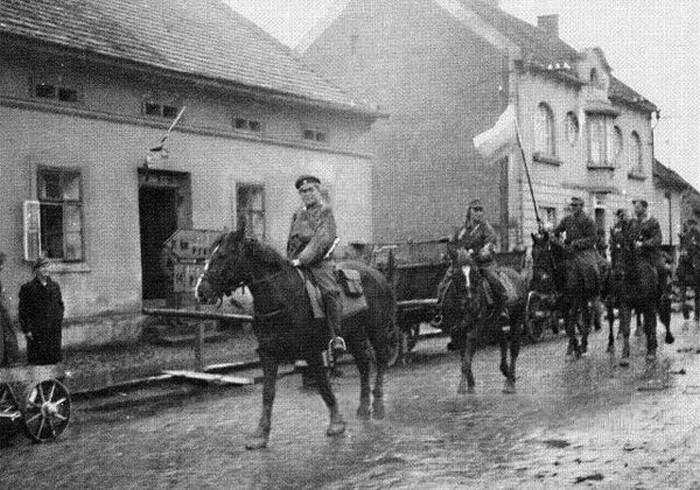
Original taken from zeleninsergey c Exposing the myth of the "Vlasov flag".
Now let's move on to viewing the illustrative material. Let's start with the Russland division.
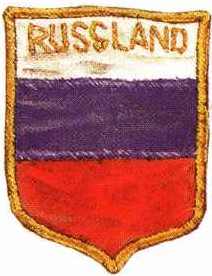
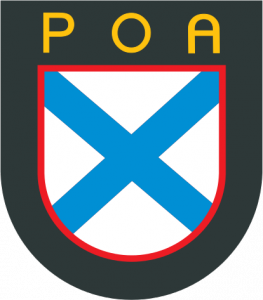
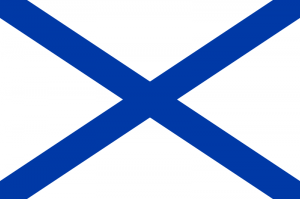

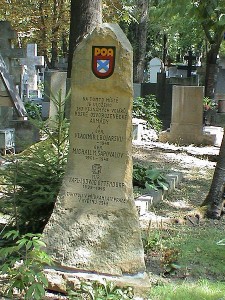
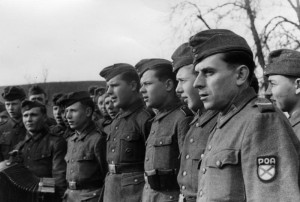
1 - sleeve chevron of the ROA fighters.
2 - St. Andrew's flag.
3 - Chest sign first ROA officer school
4 - The grave of 187 unnamed fighters of the ROA and generals of the ROA Boyarsky and Shapovalov, executed by Czech partisans, in Prague.
5 - ROA fighters - Vlasovites. Filming location - Northern France. 1944.
Everywhere - Andreevsky flag... And this at a ceremonial meeting held in Prague, where the Vlasov Committee for the Liberation of the Peoples of Russia (KONR) was created. This was in 1944. The so-called " Vlasov's "Prague Manifesto".
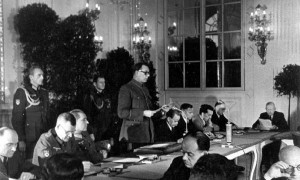
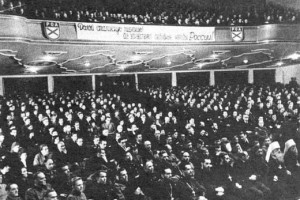
And here everywhere Andreevsky.
http://bookz.ru/authors/karlos-urado/ino stran_018 / page-3-inostran_018.html
And this is about the symbolism of the Vlasovites and other collaborators.
http://www.vexillographia.ru/russia/coll abor.htm
Although the use of the white-blue-red flag by the Vlasovites is also known. For example, at the parade of the 1st Guards Brigade of the ROA in Pskov on June 22, 1943. But it was rather an exception to the rule... In support of the above, we present photographs of the parade in Pskov and the raising of the white-blue-red flag during the construction of the ROA in Müsingen (1945). (c) Let's look at the photos from the parade.
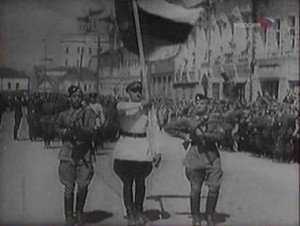
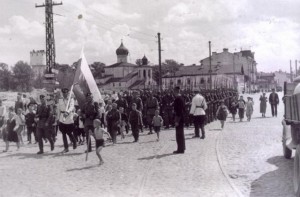
Do you see the man who carried the tricolor? In a white uniform, with a short mustache.
This man is a White emigrant and collobarotsionist G.P. Lamsdorf, who, it should be noted, did not serve either in the Russian Imperial or in the White armies, but this does not change the essence of the matter - the use of the tricolor was isolated and came as an initiative from the White emigration.
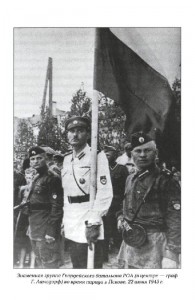
"In 1943, by the way, it was Lamsdorf who voluntarily went with a tricolor to the parade of the ROA Guards Brigade (in which there was no Vlasov yet), which caused the extreme anger of the Germans. The brigade, by the way, partly went over to the partisans, partly fled."(The author of the quote is drakonit ) This only confirms my guess that the use of the tricolor was arbitrary, an isolated case and had nothing to do with Vlasov and the Vlasovites.
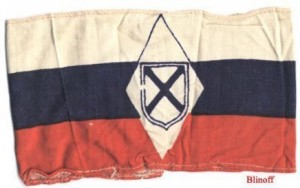
So, we have before us Vlasovites, every single one with chevrons with St. Andrew's flag , and white emigrant Lamsdorf, for which the tricolor was native... It was the flag of the monarchists, the flag of the Russian Empire... Therefore, he used this flag on the initiative of his own and a number of officers who served both in the Russian Imperial and in the white armies.
Part III. Myth-making.
Known scandalous "paintings" "artist" N.M. Terekhov, who, obviously, has some kind of personal dislike for our state flag. Obviously, he is unpleasant that this flag replaced the red flag in 1991. Dislike is understandable, but why do this?
Admire his "creativity".
http://sov-ok.livejournal.com/84043.html
http://uznai-pravdu.ru/viewtopic.php?f=3 8 & t = 262
This is nothing more than a manipulation of consciousness and a distortion of objective reality. The author of these "pictures" is trying to change consciousness and introduce into it the stupidest myth that the tricolor is the "flag of the enemy", that the Vlasovites used it only. Obviously, the author has problems that zombify other people and there are those who in all seriousness consider the flag "Vlasov". Although, as we can see, this is not true.
Let's see what the people say about this:
Is it worth reacting to demagoguery of this level? Jeanne d'Arc was one of the most important symbols of the Vichy regime (for fighting against the British). Is that why she ceased to be the national heroine of France? (with)
http://alternatiwa.h15.ru/WWII/V%20porja dke% 20likbeza% 20-% 20simvolika% 20ROA.htm
PS Here some "comrades" have a question about this - is it really so? where is the proof?
Let's take the memoirs of a Russian German, an officer in the service of the Wehrmacht, attached to A.A. Vlasov V. Shtrik-Shtrikfeldt "Against Stalin and Hitler", published in 1993 - it is difficult to find a more valuable source. We read: “ Rosenberg(Alfred Rosenberg, one of the main war criminals of Nazi Germany, engaged in propaganda - M. Ch.) studied the issue with interest about the flag(for Vlasovites. - M. Ch.). The Romanov flag with an eagle and white-blue-red colors were them, of course, rejected (since no one from the ruling elite of Nazi Germany ever thought about recreating Russian Empire! - M. Ch.). On the contrary, Rosenberg liked the blue St. Andrew's cross on a white background, conceived as a small shield on a red banner”. Or: " Historical Russian national colors - white-blue-red - were banned ”. Above the Dobendorf camp, in which the Vlasov formations were being formed, “... next to the German flag ... fluttering blue St. Andrew's cross on a white cloth ”. Against this background, the lines of one brochure (published already at Moscow State University!) Will seem somewhat strange, where the author very vaguely, perhaps even timidly, writes about the existence of his banner at the ROA: “All Russian emigration continued to consider the white-blue-red flag as a national shrine ... (…) Andreevsky flag finally became the same national one. It is possible that General A.A. Vlasov, creating the ROA - Russian Liberation Army ”. And the reader is at a loss: what kind of symbolism did Vlasov use? White-blue-red flag or St. Andrew's? Or both at the same time? Not a single photograph has preserved for us the image of the Vlasovites under the "besik", and vice versa, the sleeve insignia was a heraldic Spanish shield with a red border and the St.Andrew's flag in it. These are the vicissitudes of the historical destinies of the slandered white-blue-red and “ real Vlasov"Andreevsky flag ...
Probably few know that they wanted to revive the white-blue-red colors even in ... the USSR! From 1949 to 1953, in connection with the return to many historical symbols (shoulder straps, titles, ministries), most of the republics introduced national colors to their flags. On January 9, 1954, the flag of the RSFSR was approved - one of its projects provided for white-blue-red colors in the lower third of the cloth, but at the last moment the project was rejected, probably due to a too daring idea. That's why confined themselves to the introduction of a narrow vertical strip of blue at the shaft... (with)
http://www.protvino-forum.ru/showthread.php?t=22
In no case is it possible to justify traitors and traitors to the Motherland. But the symbolism used by them is not to blame for the fact that dirty hands took her for dirty designs. Like the French tricolor, it is not to blame for the fact that it was used by traitors. The French punished their traitors, but there was not even a thought about the flag to replace it, cancel it, or do something else like that.
Thus, it can be said that The Russian flag can in no way be considered "Vlasov" and criminal, especially since, contrary to someone's sick imagination, obviously formed under the impression of Terekhov's "painting" (see the link), the tricolor was not thrown to the Mausoleum. Well there was not this, there was. All the banners thrown at that time are counted and counted. they are all in the Central Museum Armed Forces ... You can see them all there.
Enemy banners and standards, thrown on the platform at the Mausoleum, were collected by the trophy SMERSH teams in May 1945. All of them are outdated in 1935, taken from regimental storage areas and seichhaus (new ones were not made until the end of the war; the Germans never went into battle under the banner at all). The dismantled LSSAH label is also of the old model - 1935 (the cloth from it is stored separately in the FSB archive). In addition, among the banners - almost two dozen Kaiser, mostly cavalry, also flags of the party, Hitler Youth, Labor Front, etc. All of them are now kept in the CMVS. (with)
There is NO tricolor among these flags. And there never was.
It's time to get rid of the myths and throw out of our heads this stupid myth about the "Vlasov flag", which is already tired of the order and is spread only by those who do not like it and nothing more. The flag of Russia is dear to me, I grew up under this flag, it means a lot to me. My flag, The flag of Russia for me is a tricolor.
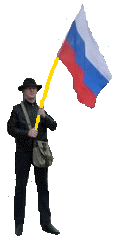
Part IV. Russian Flag - from history. Heroic Pages.
The first mention of the flag in the history of Russia dates back to second half of the 17th century
... The flag was introduced into use by the Moscow Tsar Alexei Mikhailovich. It was white-blue-red flag, which the intended for Russian ships floating in the Caspian Sea... It simultaneously played the role of an identification and signal mark, because ships of Arabs and Turks were still sailing in the Caspian and such a flag was clearly visible from afar. V 1668 g. the first Russian warship "Eagle" was launched. On this ship, by decree of Tsar Alexei Mikhailovich, white-blue-red flag with a double-headed eagle sewn on it. Peter I approved tricolor flag as a distinctive sign of ships Russian fleet
... In this case, the main purpose of the flag is to distinguish between own ships and strangers in battle and the ship's belonging to the state. So in 1699, Peter I gave the sea flag, under which merchant ships sailed, the status of the state flag - the main symbol of the country. By this time, the symbolism of the colors of the flag had finally taken shape. The tricolor banner of Peter I existed as state flag Russia before the 1917 revolution. 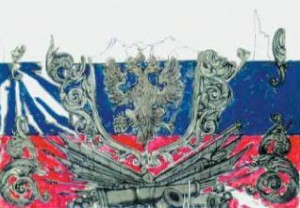
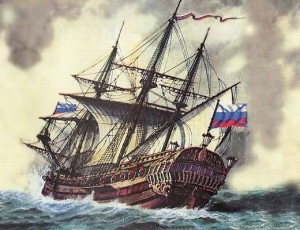
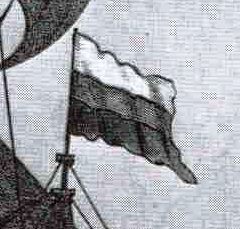

1 - Drawings of flags made by Peter I. 1699.
2 - The supposed land standard of Peter I or the regimental banner captured by the Swedes near Narva in 1700, kept in the Riddarsholm Church.
3 - first Russian ship"Goto Predestination"
4 - 5 - "Goto Predestination" on engraving by Adrian Schonebek (1701).
And finally - Russian flags in the war
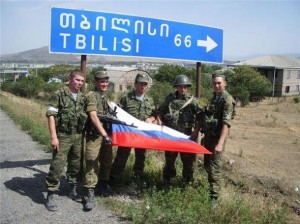
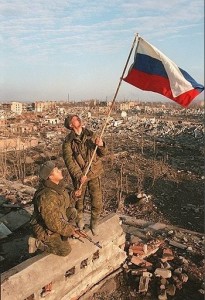
2008. The Five Day War. To Tbilisi - 66 km.
2000. Russian soldiers in Grozny, liberated from bandits.
It is the Russian flags that are raised today in Novrossia. For the local population, they are a symbol of the struggle for their freedom, for their rights.
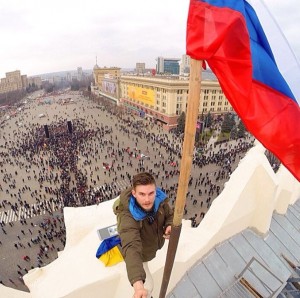
PS It was nice to meet people on the Internet who think the same way as I do.
PPS But the link is just a lethal fact, which the "comrades" will somehow have to explain :) 1947, 2 years ago the war ended - and in the film there are literally tricolors everywhere.
- Weapon sounds cs go for 1
- Festival "times and eras"
- Festival of avant-garde music Fields and "Masters of Music"
- Vdnkh: description, history, excursions, exact address Moscow Butterfly House
- After the overhaul, the Kurakina Dacha park was opened with the excavated Kozlov stream
- Library of Foreign Literature named after
- Governing Senate - Constitutional Court of the Russian Federation

 Live Journal
Live Journal Facebook
Facebook Twitter
Twitter